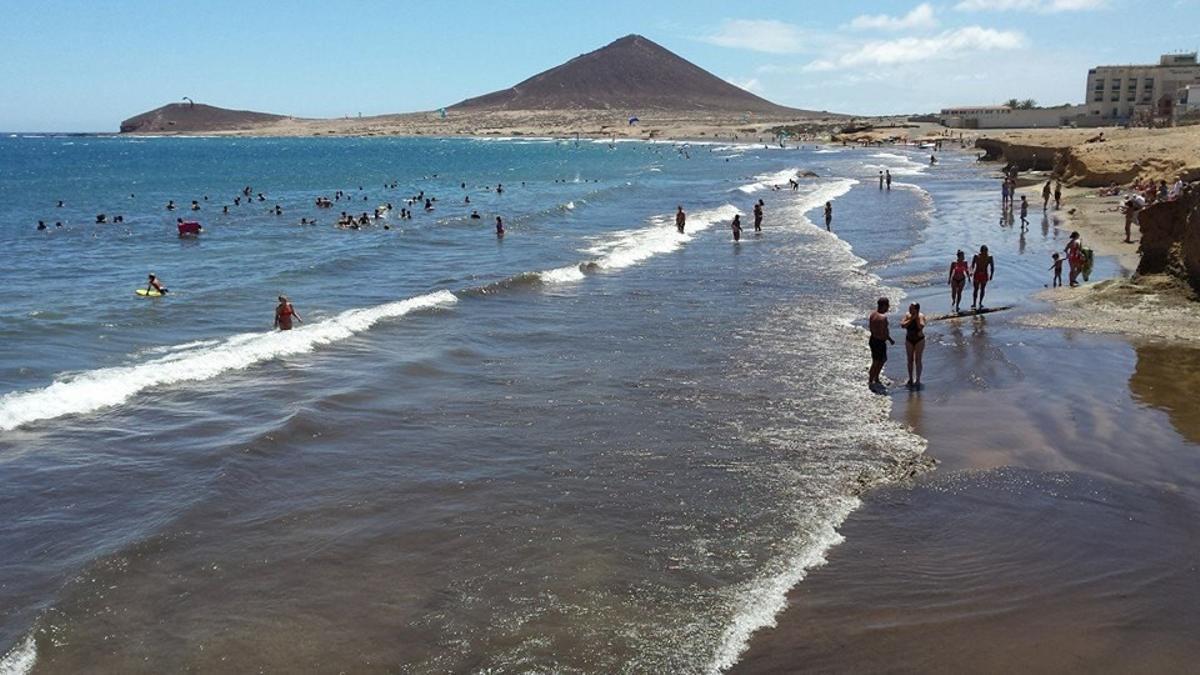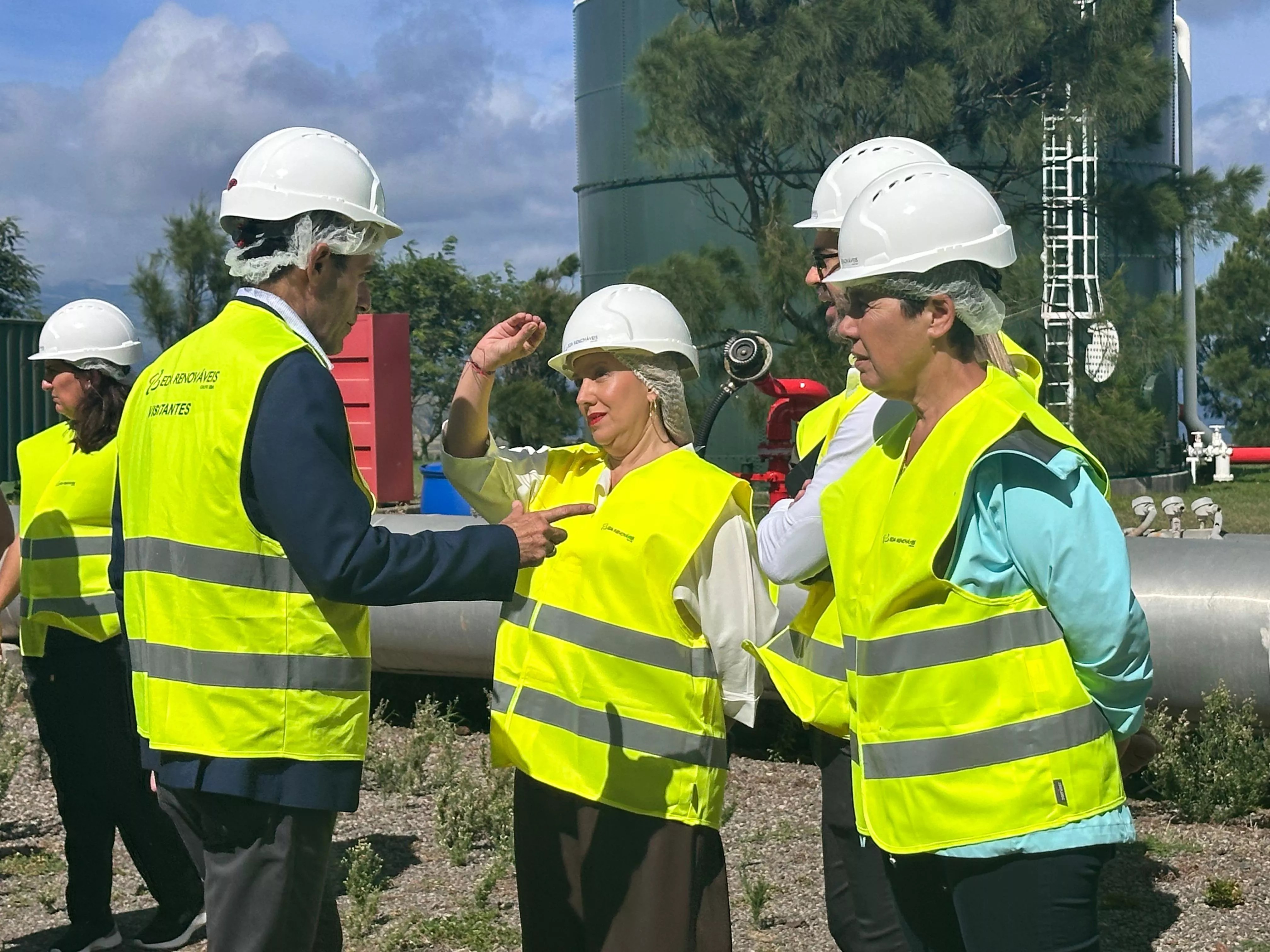The paradise of sun and beach that has built the economic model of the Archipelago will cease to be the same in just six years. Climate change and the natural erosion of the coast are turning the Islands’ main tourist attraction into a source of risk and uncertainty for the population. By the end of the century, the Canaries will lose between half and up to 80% of their beaches, but the first consequences of this progressive deterioration are already tangible. The consequences go beyond losing a place to cool off, a cultural and landscape heritage, or the unique biodiversity of its surroundings. The partial or total disappearance of the emblematic island beaches will jeopardise life on the coast, the tourism model, and the viability of some key infrastructures for the well-being of the Archipelago, which in the next 76 years will amount to a loss of up to 5 billion Euros in public coffers, that is, 11% of the Canary Islands’ GDP.
The rise in sea level and its direct impacts (such as marine storms) have often been used to alert the population to the consequences of rapid climate change. Being one of the easiest consequences to explain and most striking of global warming, it is not surprising that it has captured news bulletins, catastrophic images, or even become the premise of some disaster movies.
But the sea level rise is no longer part of a collective daydream that allows us to put a face to a feared – but distant – climate change. The sea has been reclaiming its space all over the planet for several decades, and the Canaries are no exception. In the last 30 years, the Archipelago has lost between five and ten centimeters of coastline. A figure which, although may seem insignificant, is concerning due to how quickly it is happening.
File – Las Canteras Beach in Las Palmas de Gran Canaria / CEDIDO/AYUNTAMIENTO DE LAS PALMAS DE GRAN CANARIA
A recent study by the Spanish Institute of Oceanography (IEO) has confirmed that in recent years the sea has begun to swallow land faster. “Since 1990, it has grown twice as fast as it did before, which shows that the process is accelerating,” warns the doctor in Marine Sciences from the University of Las Palmas de Gran Canaria (ULPGC), Aridane González. Analysis of the time series for the past 30 years shows that the sea level increased at a rate of 1.6 millimeters per year from 1948 to 2019, whereas since that year, the rate at which the sea level is rising is 2.8 millimeters, almost double. “The acceleration in the speed at which the sea level rises reflects that the current threat posed by climate change, far from being on the way to a solution, is worsening,” said Manuel Vargas, physicist from the Oceanographic Centre of Málaga of the IEO-CSIC and author of the study in a press release.
This acceleration will be consolidated in just six years, affecting practically the 1,500 kilometers of coastline in the Canaries. According to Greenpeace, in six years all the Islands, except Tenerife, will see their coastline affected. According to a recent report by this organization, titled Crisis at all costs 2024: analysis of the coastal situation before the risks of the climate emergency, some of the most emblematic coastal points that could gradually disappear are Morrojable, Corralejo, or Majanicho in Fuerteventura; Maspalomas, Castillo de Romeral, Arinaga and Las Palmas de Gran Canaria in Gran Canaria, or Acentejo, Adeje, Los Cristianos and El Médano in Tenerife.
What has caused this rapid growth? Experts argue that this is related to the progressive warming of the Earth due to the unrestrained emissions of greenhouse gases, such as CO2. This past 2023 – which has earned the title of the warmest in history – land and sea thermometers shattered all forecasts. A milestone that for experts may have been caused by a combination of climate change and the appearance of the El Niño phenomenon in the Pacific, which could have also been exacerbated by global warming. As González recalls, “the sea level rises due to the influx of fresh water (melting), but also because the molecules expand as temperature increases.” This is the reason why, in his opinion, with a more pronounced temperature increase, the sea level growth also accelerates.
Across the globe, sea temperatures have risen at least one degree above pre-industrial levels. The Canarian ocean was not spared either. In fact, the Canarian sea experienced an unprecedented heatwave that lasted over a year. This increase led the ocean to reach temperatures of up to 27 degrees in some parts of the Archipelago – the maximum temperature does not usually exceed 24 degrees. This summer, the temperature of the Canarian ocean is below the highs reached during the summer of 2023, but it remains well above other years for this time of year (23.5 degrees).
“The problem is already here”
[–>
Clearly, these rapid changes in the sea confirm that “the problem is already here,” as stated by the Zoology specialist biologist from the Complutense University of Madrid and responsible for the Rapid Response area of Greenpeace Spain, Maria José Caballero. “We are no longer able to anticipate, but solutions must be urgently implemented,” she emphasizes in an NGO statement. The organization insists on ruling out “old and costly solutions” such as sand replenishment or the reconstruction of seaside promenades.
A recent study published in Nature Communications indicates that the adaptation of the coast requires implementing realistic solutions. The study concludes that coastal damage will be 50% higher if erosion damage is not considered, while protecting and conserving beaches would result in a benefit 150 times greater than allowing them to continue deteriorating.

Archive – Medano Beach / CEDIDA – Archivo
Canarias is aware of the problem it is facing, as stated in the document Pima Adapta Costas: Evaluación del riesgo frente al cambio climático en las costas Canarias, prepared by technicians from the Ministry of Ecological Transition of the Government of Canarias during the last legislature. The document highlights that Canarias has several factors that make it more vulnerable to these sea level changes. “Thanks to the effort of many researchers, we have been able to measure the sea level rise, make projections, and evaluate the areas and infrastructure that need to be addressed with higher priority,” Gonzalez emphasizes regarding this document.
Canarias is a vulnerable territory due to its small size, fragmentation, isolation, high population density, unique ecosystems in the world, and its high dependence on tourism. An economic model that is called into question in the Greenpeace report, which reminds us that Canarias has been “the spark” of protests against touristification throughout Spain, referring to the demonstrations of April 20 under the premise of Canarias is exhausted. However, the same NGO insists, like the convening bodies at the time, that tourists should not be blamed, but rather governments should move towards “a resilient model that contributes to the regeneration of ecosystems, the reduction of resource use, and the equitable distribution of social and economic benefits.”
“This study already hints at some of the most urgent adaptation measures,” notes Gonzalez. As the researcher points out, the rise in sea level will not only affect beaches but also roads, airports, desalination plants, and sewage treatment plants near the coast, as they “are essential for daily life.” This loss of land will also require mobilising part of the population to prevent them from living amidst constant flooding.
Mass migration
[–>
The capital islands will be the most affected by this mass migration of the population. In Tenerife, the municipality of Arona will be the most affected by the water entering the urban nucleus, while in Gran Canaria, the most problematic area will be the capital itself. The changes in the coast, associated with permanent flooding due to the rise in the average sea level, will not affect a large part of the territory, but where it does, it will have “very significant” consequences, as acknowledged by Ecological Transition. It is estimated that thousands of people will have to be relocated to other areas of the Islands. “It is estimated that in the whole of Canarias, around 500 people may be forced to relocate in the worst-case scenario of 2050 and more than 5,000 in the worst-case scenario of 2100,” state the signatories of the document.
When the coast is battered by a sea storm, the situation will worsen. According to the study conducted by Ecological Transition, in a scenario where Canarias experiences a sea storm that occurs every 500 years, more than 22,500 people will need to be mobilised in 2050 and around 45,000 by the end of the century. “Episodic floods will affect more population, although it will depend on the magnitude of the extreme phenomenon,” warn the experts who prepared this document. Floods due to these sea surges could endanger 1% of the population in 2050 and 2% in 2100.
[–>
Canarias is also concerned about the number of infrastructures that will be affected, given how close many of them are (such as roads, power plants, ports, and airports) to the coast. The stability of the dikes and ports will be severely affected by the increased wave action, and furthermore, many airports located at sea level could experience operational issues. In Gran Canaria, the most affected infrastructures – in all the climatic scenarios described for the future of the Islands – will be the road GC-500 in Playa del Águila; the wind turbines located at the mouth of the Tirajana ravine, the road GC-141 in El Draguillo, the road to access the La Aldea dock, or the Las Palmas Maritime Avenue.
In Tenerife, several roads stand out, most of which provide access to beaches, or due to their exposure to the sea, already show problems periodically, such as the one in Garachico. However, the Ministry of Ecological Transition also focuses on some vital infrastructures to supply energy to the population like the Caletillas thermal power plant or the Cepsa oil refinery in Santa Cruz de Tenerife. They also do not rule out flooding in certain sections of the TF-1.
How is the loss addressed?
[–>
According to Aridane González, there are many options when it comes to implementing adaptation measures. “The solution may lie in actions as simple as re-naturalising some areas to carrying out large-scale works such as the construction of dikes, or more in-depth actions, such as relocating certain urban areas,” he says. Greenpeace, on the other hand, advocates for preventing the construction of infrastructures and urbanisations that act as artificial barriers preventing sand from accumulating on beaches, reviewing the boundaries that determine the coastal public domain, reaching agreements on relocation and demolition in areas affected by coastal retreat, or implementing a strategy of public land purchase for naturalisation and conservation.
González also does not forget about mitigation. “It is important that our everyday life is not linked to the burning of fossil fuels,” he emphasises. After all, Canarias burns the equivalent of about 100,000 barrels of oil per day. Therefore, it is also necessary for the Archipelago to make a transition to cleaner energies.
Subscribe to continue reading
















